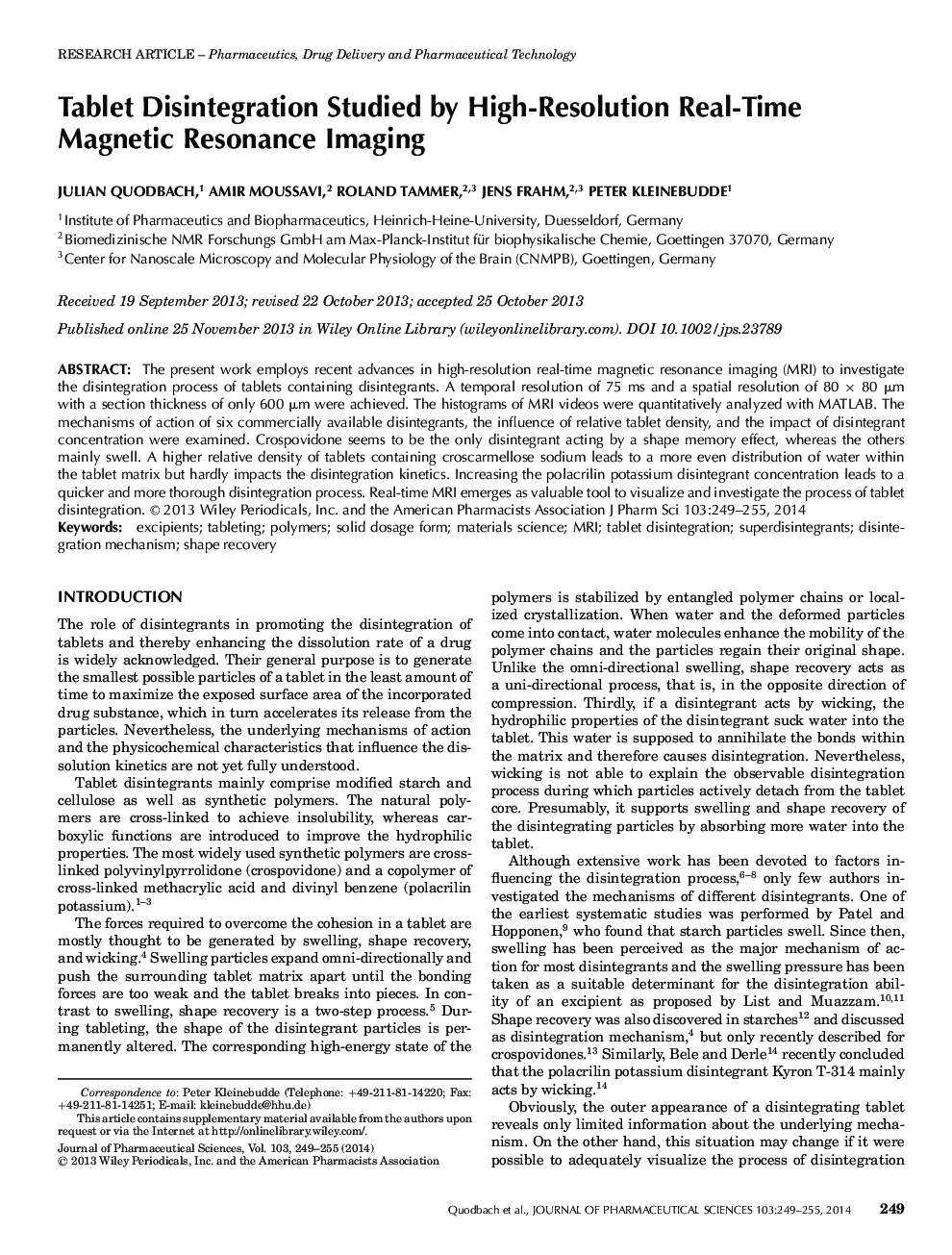| Article ID | Journal | Published Year | Pages | File Type |
|---|---|---|---|---|
| 10162654 | Journal of Pharmaceutical Sciences | 2014 | 7 Pages |
Abstract
The present work employs recent advances in high-resolution real-time magnetic resonance imaging (MRI) to investigate the disintegration process of tablets containing disintegrants. A temporal resolution of 75 ms and a spatial resolution of 80 à 80 μm with a section thickness of only 600 μm were achieved. The histograms of MRI videos were quantitatively analyzed with MATLAB. The mechanisms of action of six commercially available disintegrants, the influence of relative tablet density, and the impact of disintegrant concentration were examined. Crospovidone seems to be the only disintegrant acting by a shape memory effect, whereas the others mainly swell. A higher relative density of tablets containing croscarmellose sodium leads to a more even distribution of water within the tablet matrix but hardly impacts the disintegration kinetics. Increasing the polacrilin potassium disintegrant concentration leads to a quicker and more thorough disintegration process. Real-time MRI emerges as valuable tool to visualize and investigate the process of tablet disintegration. © 2013 Wiley Periodicals, Inc. and the American Pharmacists Association J Pharm Sci 103:249-255, 2014
Keywords
Related Topics
Health Sciences
Pharmacology, Toxicology and Pharmaceutical Science
Drug Discovery
Authors
Julian Quodbach, Amir Moussavi, Roland Tammer, Jens Frahm, Peter Kleinebudde,
